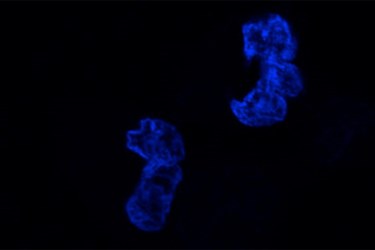Customized Nanotubes Could Deliver Drugs Directly To Cancer Cells
By Joel Lindsey

Researchers at Rice University and the University of Texas MD Anderson Cancer Center have created highly customized carbon nanotubes that they say could effectively travel through blood vessels in order to deliver drugs directly to pancreatic cancer cells.
“These findings are encouraging because they offer a potential delivery solution for pancreatic cancer patients whose tumors resist standard chemotherapy,” Jason Fleming, a professor of surgical oncology at MD Anderson involved with the project, said in a press release published recently on Rice’s website. “There are molecular and biological barriers to efficient delivery of chemotherapy to pancreatic cancer tumors, and these nanotubes might be able to make some of those irrelevant.”
Pancreatic cancer is frequently inoperable, and — with no method for early detection and an inability to treat the pancreas effectively with chemotherapy — pancreatic cancer patients generally have a dismal prognosis. In order to overcome these obstacles, researchers created specifically tailored nanotubes capable of traveling through gaps in blood vessel walls in order to attack cancer cells.
To begin with, researchers devised a system for purifying the iron catalysts necessary to grow the nanotubes, making them less likely to deteriorate through oxidation. Next, a special thermal process was used to cut the nanotubes down to an average length of 50 nanometers.
In early tests, the shortened nanotubes successfully traveled through liquids and demonstrated an ability to pass through physical barriers in order to enter the nuclei of live cancer cells.
Results from these lab tests have been published recently in the Journal of Materials Chemistry B.
While initial tests seem promising, researchers involved with the project have said that more research is necessary to determine whether or not the customized nanotubes could become a viable mode of pancreatic cancer treatment in the future.
“This research shows that the particles are small enough to get inside cells where you like them to be and that they may have an increased killing advantage — but that’s still unknown,” said Fleming. “The next step will be to test this approach in mice that have allografts taken from human tumors. The architecture of these tumors will more closely resemble that of human pancreatic cancer.”
Image Credit: Enrico Andreoli/Barron Group
